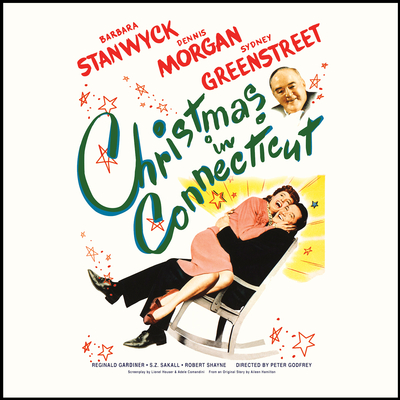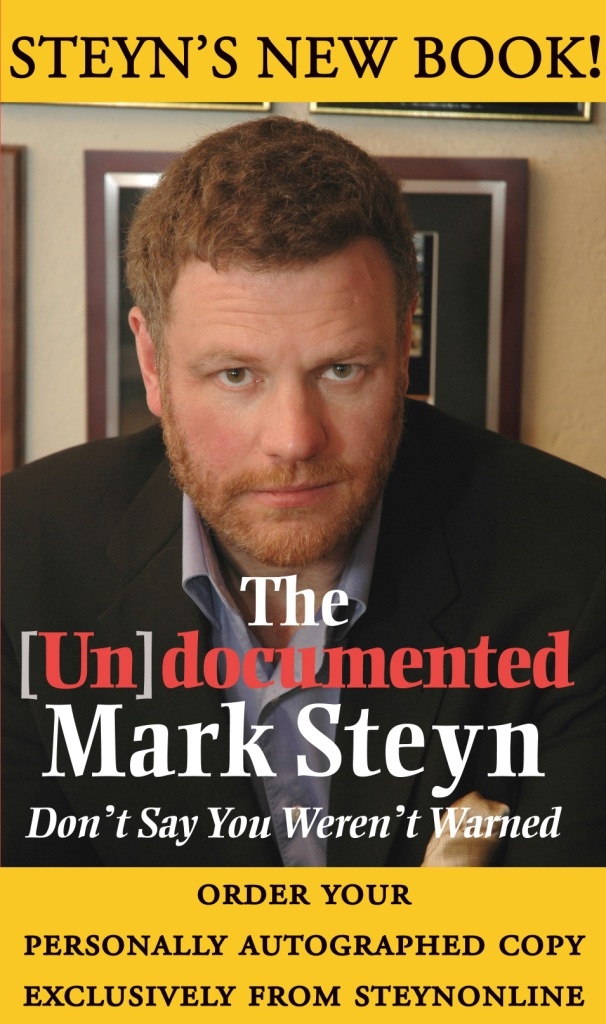It's 1945, so like any self-respecting romantic comedy with a holiday theme, Christmas in Connecticut opens with a German U-boat torpedoing and sinking an American destroyer. There are only two survivors in a single life raft: quartermaster Jefferson Jones (Dennis Morgan) and Sinkewicz (Frank Jenks), and Jones is spending his days adrift on the Atlantic dreaming about the slap-up meal he'll have if they get rescued: steak and baked potato with all the trimmings.
He dreams about the meal, sitting at a table on the raft in a white dinner jacket eating off linen and china with silver while "Sink" serves him. You have to wonder just how hardened audiences had become by the last months of the war that a film could joke about a situation where just two men out of a crew of nearly 220 survive to drift on the open sea for (as we learn later) nearly three weeks.
The war is all over Christmas in Connecticut, which was filmed in the summer of 1944 and released nationwide on August 11, 1945, three months after V-E Day and just four days before V-J Day. But there's also the imminent peace and the return of civilian life and economy, which promised much and put enormous pressure on government and industry to deliver. By Christmas 1945 a million soldiers, sailors and airmen had been demobilized out of over 12 million in uniform and Christmas in Connecticut was meant to find an audience among them – and their families.
The good news for Jones is that they're rescued; the bad news is that while Sink is sitting in bed in a stateside military hospital chowing down on steak, he's being served mush to prevent a potentially fatal shock to his starved digestive system after he gave the last K ration on the raft to Sink. (It's called RFS, or Refeeding Syndrome, and we learned a lot about it among survivors of the siege of Leningrad, prisoners in Japanese POW camps and after the liberation of concentration camps.)
It's prolonging Jones' suffering but Sink tells him how he upgraded his meal plan with his "magoo" – a superior version of baloney where he's charmed his nurse to deliver better treatment. Jones pulls the magoo on Mary Lee (Joyce Compton), his achingly sweet but slightly dim nurse (she consistently loses at tic tac toe), a Southerner who's sweet on him; he only has to promise to marry her to get all the chops and steaks he can eat.
Jones tries to fudge his commitment by pleading that as a bachelor and bohemian – he was an artist before he enlisted – he's never had a stable home and is frightened of domestic life. Mary Lee takes it upon herself to write a letter to Alexander Yardley (Sidney Greenstreet), a rich and famous magazine publisher whose daughter she had once nursed. She asks if he might give Jones a glimpse of the perfect home with an invitation to spend Christmas with one of his star columnists, Elizabeth Lane, billed in Smart Housekeeping as "America's Best Cook," and a personal favorite of Jones.

We finally meet Elizabeth (Barbara Stanwyck) in her New York apartment where she's hammering away on her typewriter picking at a tea saucer of tinned sardines. Conspiring with Dudley (Robert Shayne), her editor, she's created a fictional image of a happily married woman living in a beautiful Connecticut farmhouse, where she tends to their child and creates magnificent menus while humble-bragging about her perfect life as what we'd call a "domestic goddess".
The real Elizabeth is single and living in a Manhattan apartment with underwear drying on the balcony washing line and hissing radiators. And she can't cook: her meals as well as the recipes she publishes in Yardley's magazine are provided by Felix (beloved Warner Bros. character actor S.Z. "Cuddles" Sakall), owner and chef at a nearby restaurant and a doting surrogate father to the ambitious but impractical Elizabeth, who thinks nothing of buying a mink coat that will drain the next six months of her salary.
A directive comes down from Yardley: Elizabeth is to host Jones at her Connecticut home for the holiday. When she tries to make excuses he bullies her into inviting him as an additional guest, eager to sample one of her nationally famous menus. Back at Felix' restaurant she tells Dudley that they're both going to lose their jobs, but a lifeline arrives in the shape of Sloan (Reginald Gardiner), her erstwhile suitor, whose Connecticut farmhouse provided inspiration for Elizabeth's fictional persona.
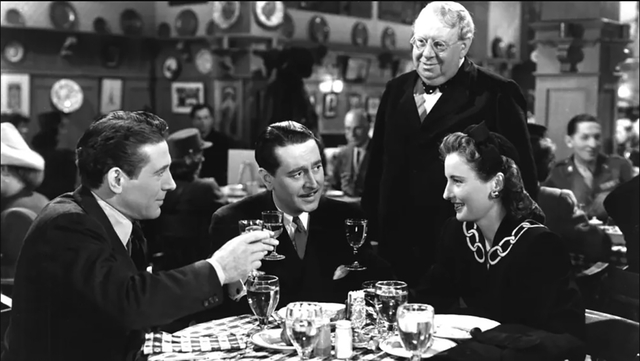
Gardiner appeared in another wartime Warners film with a Christmas theme, as the Noel Coward stand-in Beverley Carlton in The Man Who Came to Dinner (1942), and he's meant to be even more self-obsessed and unlikeable as Sloan, an architect occupied with the creation of "rabbit hutches" by Dudley. "They're multiple dwellings," Sloan pompously replies, and audiences were meant to imagine the kinds of mean, cheaply built assembly line rental housing for war workers like the fibreboard Homasote Houses, built by government agencies, whose model would be applied to postwar suburban developments like Levittown.
Everyone involved in the picture, from screenwriters Lionel Houser and Adele Comandini to director Peter Godfrey to Gardiner, was heavily invested in making Sloan unlikeable. He's a lousy tipper and a pedantic blowhard, fond of holding forth on the technical specifications of his designs. Gardiner's delivery enhances the contempt – the sort of Brit-inflected mid-Atlantic accent (he was born in Wimbledon and studied at RADA) that played as supercilious and snobbish to mainstream America.
Using the mendacious logic without which so many comedies can't proceed past their first act, they decide to make the fictional Elizabeth real for the holidays, with Felix drafted in to provide culinary backup. Apparently defeated by the success of her con job, Elizabeth decides that in for a penny is in for a pound and agrees to marry Sloan and assume the identity of her fraudulent persona, and the scene shifts to Sloan's Connecticut farmhouse.

Our first glimpse of Sloan's country house is greeting card perfect, right down to the horse-drawn sleighs that likely picked everyone up from the station on the New York, New Haven and Hartford Line train from Grand Central. It's the kind of aspirational, idealized rural scene that goes back to colonial times, codified by mass publishing and the advertising industry in the Victorian era, and essentially unchanged in White Christmas nearly a decade later with the General's Vermont inn.
As much as it's a Christmas film (albeit one released in summertime), Christmas in Connecticut is a product of the golden age of the American magazine, an era that lasted for decades; most people reading this can remember a time when newsstands were crowded with titles and circulation for top titles was measured in millions. Yardley is roughly analogous to the publishers who made their fortunes with mass market magazines – men like Hearst and Henry Luce and Conde Nast.
And his Smart Housekeeping is a thinly disguised version of Good Housekeeping, founded in 1885 and owned by the Hearst Corporation since 1911. It was one of the "Seven Sisters" – a group of what we'd now call lifestyle magazines that included McCall's, Redbook, Ladies' Home Journal, Family Circle, Woman's Day and Better Homes and Gardens. Only three of the seven have survived, the rest victims of the new century's pitiless cull of print publishing.
(The last two victims, Redbook and Family Circle, went defunct in 2019, though Redbook abides in an online half-life. McCall's, the oldest, met its ignominious end in 2002, a year after being relaunched and renamed in honour of onetime comedian Rosie O'Donnell, its "editorial director".)
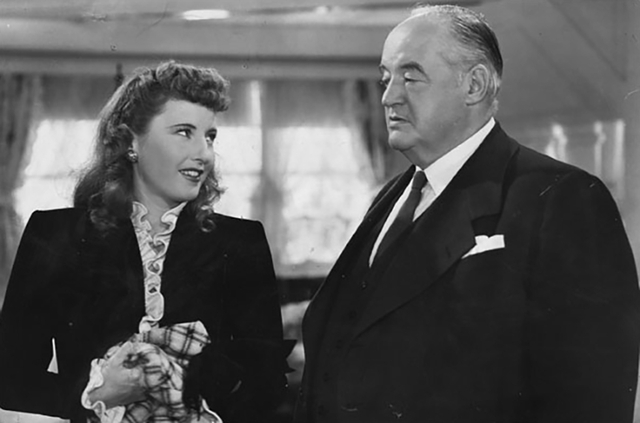
Even more than newspapers and as much as movies and (eventually) television, American magazines depicted and defined what American life aspired to become, both in editorial content and in partnership with Madison Avenue in the ads that filled their pages. Reading mass market magazines at any time from the '20s to the '80s was a bit like a fever dream, shifting every few pages from bursts of earnest social commentary to visions of what life could be like if accessorized properly, or if a single product could solve all the problems First World life presented, like lustreless hair or insufficiently airy loaves.
But we often make the mistake of thinking that readers had fully bought into the fantasies they were sold, without a trace of skepticism or sarcasm. That doesn't square with how casually audiences are shown that Elizabeth is a fraud, and how little the film imagines this will hinder our sympathy for this anxious, ambitious young woman. Aileen Hamilton, who wrote the original story for the picture, apparently based Elizabeth on Gladys Taber, who wrote the "Diary of Domesticity" column for Ladies' Home Journal from 1937 to 1957 and authored 59 books.
In Magazines in the Twentieth Century, a 1956 survey of the industry, Theodore Peterson wrote about the mass media "creating a pseudo-world, a picture out of focus which readers sometimes confused with the real thing." It was "a world of optimism and good works in which science worked only beneficent miracles, in which poverty was at worst a nuisance... This pseudo-world was a harmless creation so long as readers did not confuse it with the world of reality."
"This pseudo-world was a harmless creation so long as readers did not confuse it with the world of reality, but there was always the danger that they would," Peterson says with a tone of paternalistic concern that's still the default mode in this sort of academic overview. "There was certainly a frustratingly wide chasm between what such stories led women readers to expect from marriage and what they eventually got." Even as a watered-down derivative of a screwball comedy, Christmas in Connecticut inherits the wry presumption that everything being sold to both the characters and the audience watching them, by politicians or journalists or businessmen, is a racket when you scratch off the gilding.

But that doesn't stop the film from swooning just a little when the picture onscreen resolves into the fantasy we paid the ticket price to see. Elizabeth and Sloan are about to get married by the local judge when Jones and then Yardley arrive early, postponing the nuptials. Nearly but not yet a married woman, Elizabeth swoons at the sight of Jones and kicks off their increasingly ardent flirtation, during nearly all of which Jones works on the assumption that he's falling for someone's wife and she's falling for him under her nationally famous marital roof.
While trimming a massive tree set up by the picture window Sloan has tastefully built into his farmhouse renovation, Stanwyck can't keep her eyes off Morgan while he accompanies himself on Sloan's grand piano. Morgan began his career as a radio announcer in Milwaukee and a radio singer in Chicago, though in one of his earliest, uncredited parts in Hollywood, he lip-synced to an Irving Berlin song in The Great Ziegfeld (1936).
Morgan sings "O Little Town of Bethlehem", followed by "The Wish That I Wish Tonight" by Jack Scholl and M.K. Jerome, who wrote "Knock on Wood," the only original song in Casablanca. Elizabeth drops an ornament while perched at the top of a ladder. Sloan seems utterly oblivious to their very obvious attraction, concentrating instead on Yardley's offer to have him write a column on house design – provided he and Elizabeth can produce another child in nine months, in time to trump the pregnancy of a competing columnist at another magazine.

The infatuated Jones is even willing to break up Elizabeth's family if his feelings are reciprocated. Because the detail-oriented Sloan has managed to borrow a baby to complete the illusion for Jones and Yardley, and the film's running gag is that the baby keeps changing sex and hair colour as different women working shifts at a local defense plant leave their tots for Sloan's Irish housekeeper Norah (Una O'Connor) to babysit.
Stanwyck could be fine in a good comedy (like Ball of Fire or The Lady Eve) but she wasn't really a comedienne on the order of Carole Lombard, and Morgan was very much a straight man and good-natured stiff – Warner's very own Ralph Bellamy. That leaves much of the actual comic heavy lifting to Greenstreet, Sakall and O'Connor; there's a bit of business early in the picture when Casablanca castmates Sakall and Greenstreet meet again, and Sakall mutters something under his breath about a "fat man." An awful lot rests on the Budapest-born Sakall's malapropisms and mispronunciations, and particularly his mangling of the word "catastrophe."
The comic mix-up that forces the film's climax arrives when Elizabeth and Jones let a horse take them on a sleigh joy ride and get arrested, all while Yardley, incensed after he witnesses their open flirtation, mistakes a war worker mom's late night baby pick-up for a kidnapping. He calls the police and press and sets a scene that overtly echoes the Lindbergh baby tragedy – just over a decade in the past but still played for laughs. (Audiences in 1945 definitely had hardened sensibilities.)

Stanwyck, as James Harvey writes in Romantic Comedy in Hollywood from Lubitsch to Sturges, "seemed too downright – her effects too plain and undecorated – for comedies." She did them – mostly what Harvey calls "pale" stuff like Breakfast for Two and The Bride Walks Out. "But no matter how poor the movies, Stanwyck went on being impressive somehow. She never seemed foolish or strained, and she became over the years a powerful accumulating presence for audiences, one of those stars whose existence seemed almost to define the movie experience at its most satisfying and sustaining."
It took a verifiable genius like Preston Sturges to create the right comedy for Stanwyck – a feat he set himself almost as a dare, telling Stanwyck in advance that he was going to do it. "The special tone of The Lady Eve," Harvey writes, "is a kind of energetic cruelty, a malicious exuberance, reflected chiefly in Stanwyck's treatment of (Henry) Fonda: a kind of relentless and systematic humiliation, extending over the whole film with all its changes of direction and transformations of character."
Unfortunately, Christmas in Connecticut is no The Lady Eve, and Peter Godfrey is no Sturges. But he was a friend of Stanwyck, and he would direct her again in Cry Wolf and The Two Mrs. Carrolls (both 1947). Stanwyck was even appointed guardian to Godfrey's daughters when the director's wife, actress Renee Haal, died in 1964.
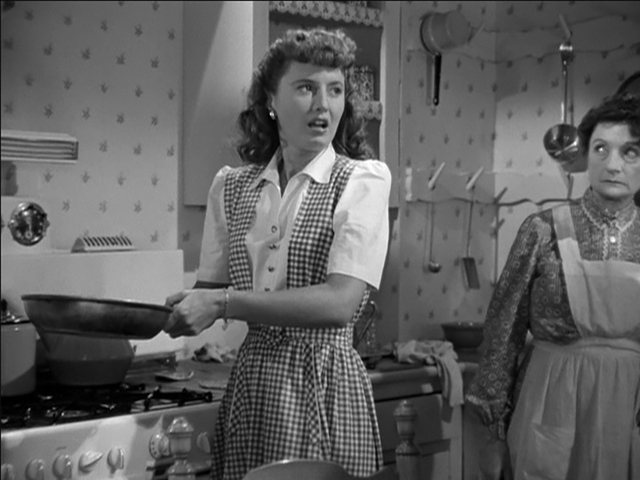
In his biography Barbara Stanwyck: The Miracle Woman, Dan Callahan calls Christmas in Connecticut "the sort of holiday movie that seems to have been made as bland as possible so that audiences can watch it after stuffing themselves with turkey and cranberry sauce" and describes Godfrey as directing it "in a plodding, totally uninterested manner." You can't help but wonder what it would have been like if Sturges or Howard Hawks had been assigned the film, or even Mitchell Leisen or Gregory La Cava. And while you're at it, imagine the picture with Bette Davis as Elizabeth – the original casting for the role.
Still, the film was a palpable hit, taking in somewhere between three and four million dollars on a budget of $864,000. It's an evergreen selection on TCM, and there's a solid case to be made that Christmas in Connecticut is the blueprint for the Hallmark holiday film – the ones where the busy career woman is forced to spend the holidays in some small town where she meets the salt of the earth man who convinces her to quit her job/end her passionless engagement to some city dweeb who can't build a table/ride a horse.
It was remade in 1992 with Dyan Cannon and Kris Kristofferson, a TV movie that makes the original even more venerable, directed by no less than Arnold Schwarzenegger. Magazines try to recreate one of Elizabeth's Christmas dinners, or succumb to its well-aged nostalgia, describing it as "a perennial holiday favorite that leaves you warm as a mug of mulled wine every time." Which is pretty good for a film whose connection to Christmas more or less ends with some set dressing, a title and a Christmas carol.
Club members can let Rick know what they think by logging in and sharing in the comments below, as access to the comments section is one of many benefits that comes along with membership in the Mark Steyn Club.


